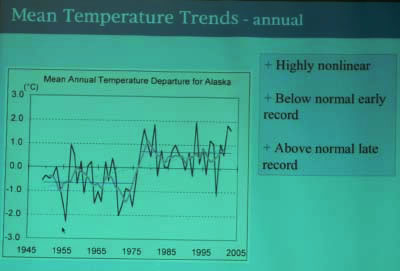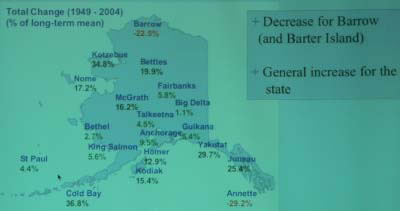 |
AAPT Winter Meeting 2006 |
 |
Climate Variability in Alaska
Monday, Jan 23, 2006 9:00 - 9:30 AM Martha Shulski, University of Alaska Fairbanks
The high latitude of Alaska results in a high variability in radiation energy over the year. The proximity to water introduces moderating influences in some parts of the state. The variations in elevation produce rainshadows. The combined effect is regions of polar tundra, subpolar, and maritime climates.
There are few weather stations with large gaps in between. From 1949 to 2004 all stations show an increase in mean temperature averaging +1.9şC. In addition, the number of days per year with continuous snow cover is decreasing. The number of "cold" days is decreasing, and the number of "warm" days is increasing. The number of acres destroyed by forest fires each year is increasing. Coastal erosion is accelerating. More information can be found at The Alaska Climate Research Center at climate.gi.alaska.edu.

